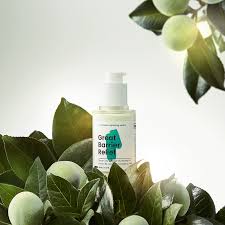
How to use Tamanu Oil for Acne
If you haven’t suffered from acne, or any breakout for that matter I envy you, maybe a tiny bit jealous at the same time…. If, like me you have had trouble with your skin and frequent flare-ups in breakouts and spots, you would understand the determination you feel to find an ingredient that will rid you of these unwanted visitors.
You may also feel a little thrown at the thought of using an oil to help treat your acne. It does feel counterintuitive to use an oil on an oily skin type, but believe it or not, tamanu oil can benefit the skin and help treat any breakouts. So, without further a due, let’s find out how to use tamanu oil for acne.
Is tamanu oil good for oil acne prone skin?
Yes, it is! You’ll often find that skincare products formulated with the idea of targeting breakouts are often very harsh on the skin. The urge to feel “clean” can often make an acne suffer want to scrub the skin until it is stripped of every ounce of natural oil (also known as sebum) this can kick start the skin’s oil production resulting in a vicious cycle. This is when tamanu oil can step in and provide a gentle approach at treating the skin. Rich in fatty acids and other nourishing properties you’ll ensure you treat the skin and any acne flare-ups gently without any drying side effects. In this next section we will explain how to use tamanu oil on your pimples and affected areas effectively.
Can I apply tamanu oil on pimples?
Yes, you can! Don’t let this rich oily texture fool you, tamanu oil is very effective at treating acne and other blemish flare-ups thanks to the antibacterial and anti-inflammatory properties. Its these added benefits that boost the healing power of the skin ensuring any active blemishes are soothed and reduced in size.
There is very little scientific study surrounding this ancient oil, but it just so happens, that in 2015 a study into 5 different areas of the South Pacific found extracts of tamanu oil contained high levels of Propionibacterium acnes, also called P.acnes bacteria, famously known for tackling and kill off any signs acne causing bacteria on the upper surface of the skin.
Word of warning however, you can have too much of a good thing and the consistency of tamanu oil can lead to the pores becoming slightly blocked. The best way of reducing this problem is to simply team the oil with lavender or tea tree oil to avoid any clogging the pores.
If that isn’t enough for you, tamanu oil can also help with treating acne scars thanks to the cell rejuvenating and antioxidant properties, you will find there will be a significant improvement in the pigmentation of any acne scarring.
How often should you use tamanu oil?
As I have already mentioned, there is a slight chance in tamanu oil becoming slightly comedogenic. Because of this I would suggest teaming formulas containing tamanu oil with other products that contain effective and active skin ingredients to help target blemishes.
Luckily for us, tamanu oil can be used with several potent ingredients, such as salicylic acid, bexoyl peroxide and popular AHAs, such as glycolic acid and lactic acid. Try adding 3-4 drops of tamanu oil directly onto the affected areas once or twice a week after you have cleansed and exfoliated your skin. This will help lock in moisture into the skin whilst allowing the various antibacterial, antioxidant and anti-inflammatory properties work at reducing the size, redness and severity of spots whilst preventing more from surfacing.
Can I use tamanu oil on my face?
Absolutely! Tamanu oil will benefit all skin types when used correctly, much like all skincare ingredients performing a patch test on the skin for 24 hours is vital to finding out how your skin will react. If there are no signs of irritation, you have the green light to apply the oil onto your skin.
For those prone to dryness and sensitivity, applying a liberal amount of tamanu oil to the skin will prevent further drying and irritation caused when the skin is exposed to environmental aggressors, especially during the winter months. As for oily and blemish-prone skin, as I have already spoken about in the previous section, you can effectively target active spots and breakouts.
Will tamanu oil clog pores?
Yes and no, by this I mean if you don’t over-use the oil you are able to target and treat any breakouts and acne. With the high levels of antibacterial and anti-inflammatory properties in the formula you will help bring clarity to the complexion and restore it to its healthiest state. Try using tamanu oil on alternate days applying it directly onto the affected areas of the skin as this will allow the beneficial properties work at combating breakouts without becoming too heavy on the skin and clog the pores.
Ensuring you continue to maintain an effective skincare routine will keep your complexion clear and prevent tamanu oil from clogging the pores which will only lead to a build-up in bacteria, excess sebum and impurities which results in, you guessed it, more acne, and breakouts.
How long does tamanu oil last after opening?
This is very much dependant on the quality of tamanu oil you are using. It is known that the harvest of this particular oil is a long and time-consuming process. This often leads to many products containing low quality oil making their way onto the market. If you are using a product that is a rich dark green colour you will find it has the shelf life of roughly 5 years if stored in a cool place out of direct sunlight.
Tamanu oil isn’t necessarily a new skincare discovery but has in fact been used for thousands of years by the Polynesian people. Introduced into everyday life and was considered a gift from the gods themselves, which probably explains why it has been dubbed “green gold” If you are wanting to know more about the history of tamanu oil, check out our blog post.
Don’t forget to come and follow us on Instagram for more skin tips, discount codes and new product launches.


